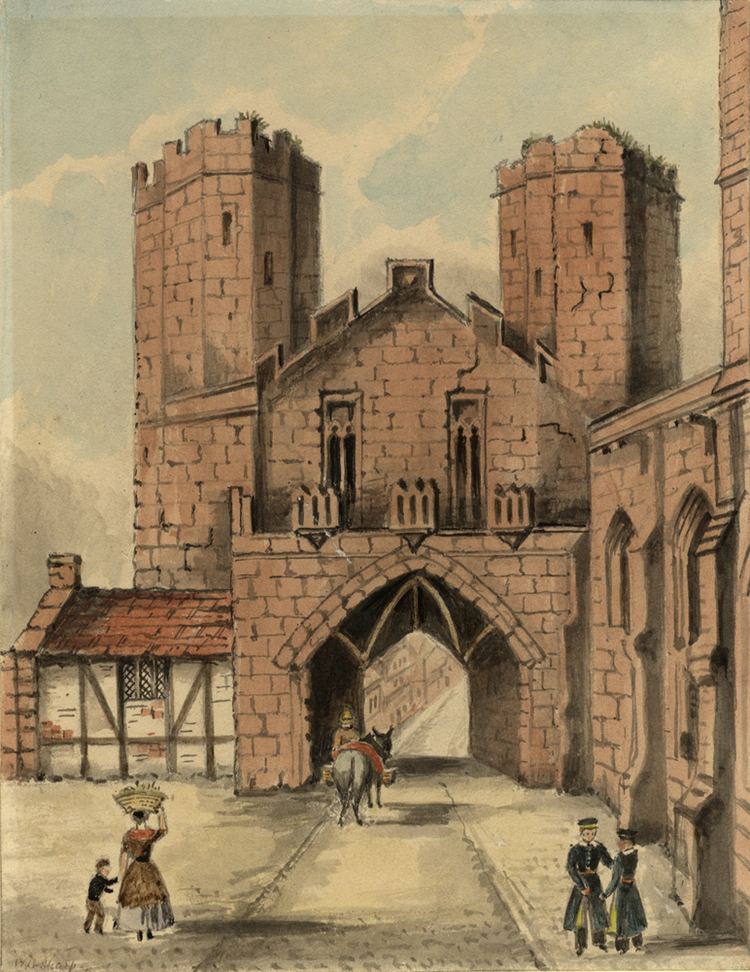 | ||
Spon Street (sometimes referred to as Historic Spon Street or Mediaeval Spon Street) is an historic street in central Coventry, in the West Midlands of England. The street was once part of a route that ran from Gosford, in Oxfordshire, to Birmingham—a route which remained intact (though superseded by more modern roads) until the 1960s. With the construction of Coventry's Inner Ring Road, built to relieve traffic on the narrow city centre streets, Spon Street was cut in half and the route severed.
Contents
Map of Spon St, Coventry CV1, UK
Route
The street originally ran from St John the Baptist Church, a Grade I listed building, from where the expression "sent to Coventry" may have originated, out of the city centre to the west, through the area known as Spon End, to the bottom of Hearsall Lane. After the construction of the Inner Ring Road, only the lower part of the street (from St John's Church to the ring road) remained known as Spon Street.
History
Spon Street was an industrial area from at least the 12th century (CE), when it was predominantly occupied by dyers, who were moved to the edge of the city because of the fumes from the urine they used, and other textile industries that needed good access to the River Sherbourne. The fabrics produced were so renowned for holding their colour that the saying "true as Coventry blue" entered common usage. Coventry city walls were built in the 14th century, and a gate was constructed on Spon Street. One of 12 in the city walls, it was known as Bablake Gate, but was renamed Spon Gate in recognition of the settlement known as "Spon", which had formed outside the gate. The walls, and Spon Gate, were demolished in the late 18th century, and at around the same time, Spon Street saw a shift in the industries based in the area. The street was known as a hub for watchmaking throughout the Edwardian era—a reputation that continued well into the 20th century, when bicycle and motorcycle manufacturers set up factories in the area.
In common with much of the rest of the United Kingdom, Coventry—and in particular Spon Street—experienced significant upheaval during the Second World War. Most men who worked in the factories went to war, and women were employed to manufacture telephone parts. Coventry was bombed many times during the war, but many of Spon Street's ancient timber buildings, however, emerged from "the blitz" intact. During the post-war redevelopment of the city centre, many mediaeval timber buildings were relocated to Spon Street from elsewhere in the city in an attempt to preserve them. When the Inner Ring Road was built in the 1960s, the street ceased to function as the main thoroughfare out of Coventry, as the ring road cut Spon Street in half. The reduction in traffic had a drastic effect on passing trade, prompting many businesses to relocate.
Modern Spon Street
Following the relocation of historic buildings to Spon Street from elsewhere in Coventry, the area was designated a Conservation Area by Coventry City Council in 1969.
Twenty-first century Spon Street, now promoted as a tourist attraction, is home to around two dozen shops, restaurants, and public houses, operating either from original or relocated mediaeval buildings.
